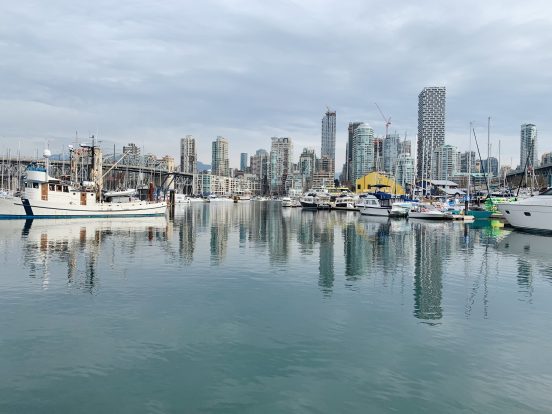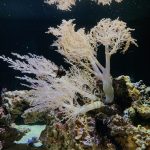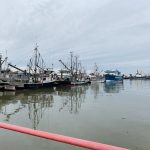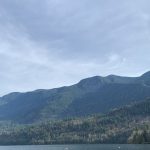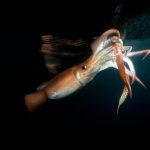A memorable takeaway from our trip to False Creek was the intersection of sustainability and society highlighted by our conversation with Fraser MacDonald. I had never directly spoken with a fisherman about their work, so I appreciated hearing his perspective regarding how fishing boils down to wanting to feed people in a sustainable way using the resources we have access to in BC. His motivation to choose fisheries sectors that prioritize sustainability in fishing really stood out to me because it showed that he has a lot of intention in his work, is thoughtful about his decisions and understands how they affect those around him. He values his work deeply and connects with the community by wanting to provide a sustainable food source for them. I found it enlightening that there are people like Fraser in the industry who connect with the people on the receiving end of the fish instead of only the economic gain.
The field trip provided a great understanding of the different forms of fishing encouraging the connection between the gear we learned about in class and the gear being used in someone’s daily routine. It was helpful to see the various types of gear being used and hearing the motives behind the designs. It led me to think about how these designs may be altered in the future to respond to fisheries pressures i.e. fisheries adopting more passive gear instead of active gear to reduce ecosystem damage. This part of our field trip encouraged thoughts about how these issues require a dynamic and collaborative set of solutions to really make an impact. It would be helpful to assemble a team of engineers, marine scientists, educators, conservationists, economists, fishers, etc. to reach this common sustainability goal in fields such as fisheries. I enjoyed being able to visualize where these fishing boats dock, what kind of fishing gear they use and the beginning of the land-based fishing processing to distribute the acquired food.
Meeting with Mark Adams at False Creek was a great experience that inspired me to think about what restoration will look like in the future. We know that our first priority should be to alleviate (anthropogenic) pressures on ecosystems and conserve/protect these regions and then to restore once the ecosystem will be able to benefit from restorative actions. I loved his statement about how planning restoration activities begins with plagiarizing nature and using this as a framework for your plans. This part of our trip connected with my future career plans as I am fascinated by restoration efforts, particularly with coral reefs. It was beneficial to see the parallels between restoration of False Creek and coral reefs, as they are both hotspots for biodiversity, provide habitats for many species, and carry great cultural significance to humans. I hope to carry the ideas brought up during this discussion with me in my career.
After our trip, I plan to learn more about how much False Creek has changed over time, especially regarding the idea of shifting baselines. This idea is prevalent in every field but is quite notable in conservation since stark physical changes are time stamped in photos through time as seen by the historical photos of False Creek. Even though there may be visual evidence of significant changes, people entering the field now possess a very different idea of what “normal” looks like compared to people who have been conservationists for some time. The person behind the shifting baselines concept, Dr. Daniel Pauly, is a current professor of mine and often notes that we see a significant effect due to shifting baselines in fisheries science. This idea links back to our conversation with Fraser who is a younger fisherman compared to his colleagues, so I’m sure the fishermen who have been fishing longer than him would be able to identify major trends in fish stocks over their careers that Fraser hasn’t seen.
I was surprised when Fraser mentioned their fishing vessels often go a ways offshore and that they are fishing outside of the exclusive economic zone (EEZ) up to 400 miles from the coast. This observation opened my eyes because I had always imagined that fishermen were fishing relatively close to our coast, but I now see it is a much bigger undertaking. It was interesting to hear about sustainability in Fraser’s work regarding MSC certification and how difficult this process is. MSC is focused on traceability through monitoring fisheries and conducting frequent audits indicating it’s a stamp of approval on seafood seen in markets and grocery stores. It validated the idea that MSC certification is the gold standard as established by our class discussion regarding sustainable seafood with Dr. Sarah Foster.
In conclusion, this field trip provided an opportunity to see that conservation is right in front of us, even in a densely populated city like Vancouver. It enabled me to learn about new things in areas I had been but didn’t know the whole story of. My main takeaways from the trip were that restoration should begin with plagiarizing nature, fishermen like Fraser are prioritizing sustainable fishing through intentional practices and gear use, and we should continue to listen to these new perspectives to reach a common conservation goal. Questions I would like to probe further include: How can fishing gear be redesigned to reduce ecosystem damage? How can we encourage increased sustainability by fishermen to reduce the impact on marine life – is this through education, better monitoring, a combination of both? How can we encourage more restorative habitat creation in urban environments similar to Mark Adams’ False Creek initiative? Additionally, how can we increase community engagement for these projects?
